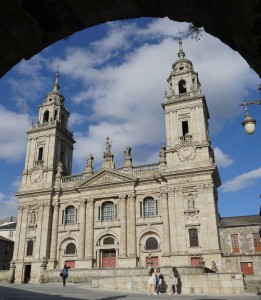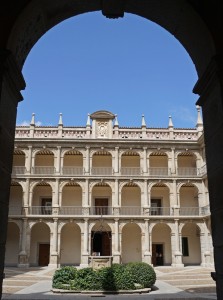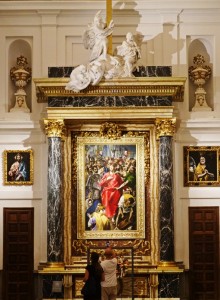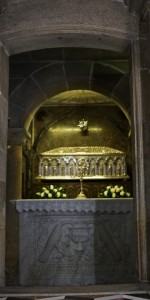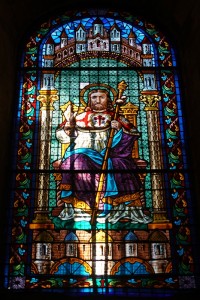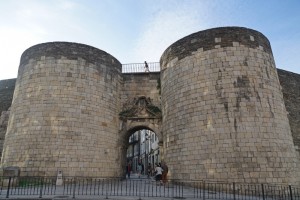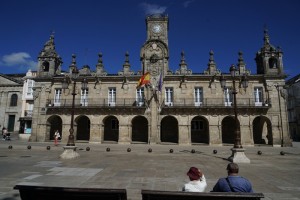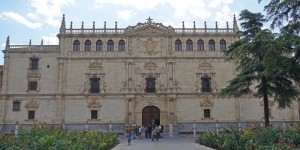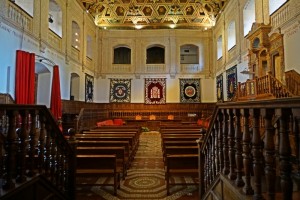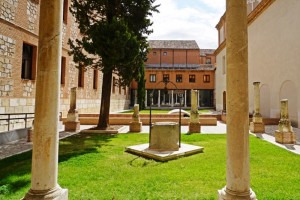September 11 -15, 2017 Santiago, Lugo, Madrid, Toledo & Alacá de Henares
September 11 Monday: Santiago de Compostela to Lugo by bus
After a wonderful sleep, I got up before 8am and watched rays of rising sun lighting up the cathedral for a few minutes. Then clouds came in. The Hong Kong gang of four and Igraine would be leaving at 11am for Madrid while Aliana and I would be taking the bus to Lugo. I hurried off to the old town in order to be back in time to say good – bye to my friends.
I followed Rúa Das Hortas with rows of old terrace houses. On the way to the Praza Do Obradoiro, I stopped at San Francisco Church at the end of the road. The splendid square was empty: I could take a photo of this majestic square and the cathedral without the crowd!
I went to the Cathedral again. It was early with few visitors. Hence I was able to lay my head on the Apostle’s shoulder, sit down to reflect on my journey and soak in the atmosphere. Then I looked around at the rich interior of this imposing baroque cathedral. I also watched pilgrim mass conducted in German, Polish, French and English in some of the chapels.
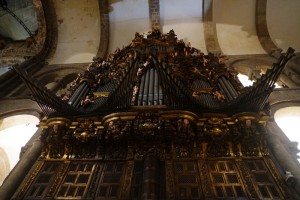 |
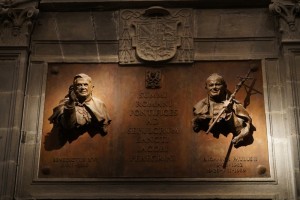 |
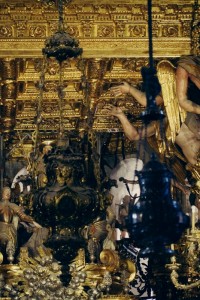 |
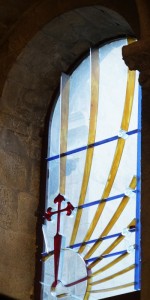 |
I always enjoy wandering aimlessly in the narrow dark alleys of old towns. This time, I had much pleasure in looking at the buildings and squares around the Cathedral which were empty. The feel at Praza Inmaculada, Praza das Praterías and Praza de Quintana are all different. Praza das Praterías is always busy as all visitors now enter the Cathedral from this side. Praza de Quintana provides the eastern entrance to the Cathedral via the Holy Gate Porta Sànta (the Door of Pardon). This door is only opened during Holy Years (the next in 2021). It was the first time I was at Praza Inmaculada which is dominated by the majestic Monastery and Church of San Martino Pinario.
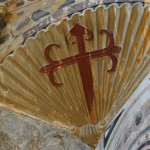 |
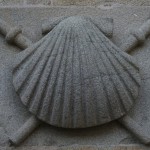 |
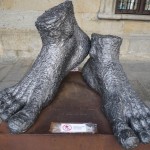 |
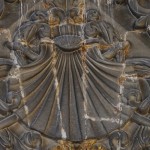 |
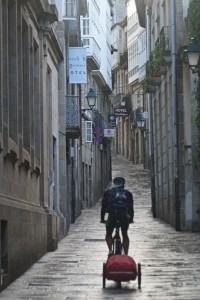 |
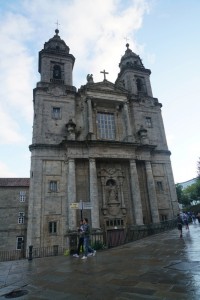 |
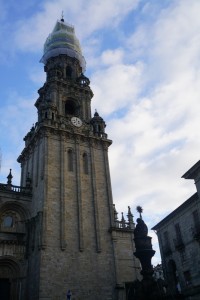 |
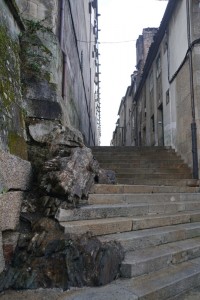 |
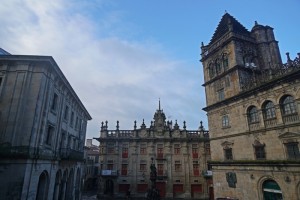 |
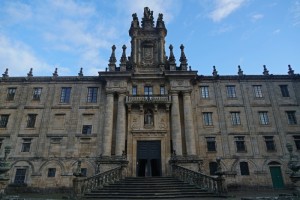 |
Time passed quickly and I raced back to the hotel just in time to see my friends off. Then I grabbed some fruits, a coffee and cheese before the staff closed the breakfast room. Shortly after 12 noon, we took a taxi to the bus station. The two- hour bus ride only costs €7
Lugo, capital of the province of Lugo with a population of around 100,000, took us by surprise. It is one of the important cities on the Camion Primitivo beginning in Oviedo: pilgrims would enter the city at the Porta de San Pedro, follow Rúa San Pedro to reach the Cathedral and leave from the Porto de Santiago to walk along Rúa Santiago.
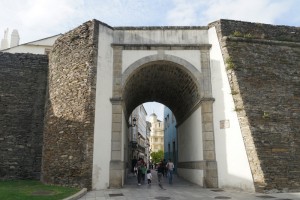 |
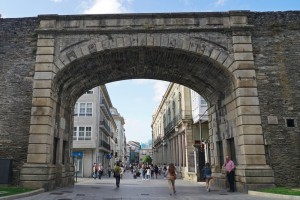 |
Lugo is the only city of the world to be surrounded completely intact Roman walls built between 260 and 310 AD. They reach a height of 10 to 15m along a 2,117m circuit ringed with 71 towers. The walk along the top is continuous round the circuit, and features ten gates and six inner staircases leading to its top.These 3rd century walls are inscribed on the World Heritage List. The city also boasts 13 other Roman sites, ten religious monuments and many buildings of interest.
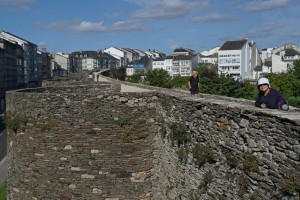 |
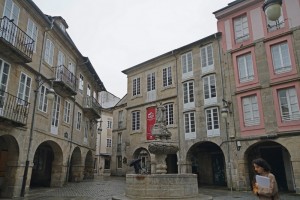 |
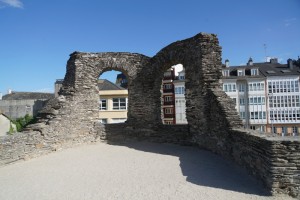 |
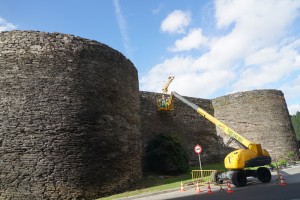 |
We paid €7 for a short taxi ride. Later we found out that it would take only ten minutes to walk to our hotel inside the walled city. Anyway with our heavy luggage, we had to take a taxi. On the hotel’s recommendation, we went to a local restaurant near Praza do Campo where we had fish and pork for lunch. The portion was enormous and the meat was excellent. By the time we finished dinner, it was after 4:30pm.
Our hotel is next to the Praza Maior, a beauitful park surrounded by the town hall and old buildings. After visiting the cathedral (first built in 1129), we went up the wall at the Porto de Santiago first built by the Romans and reconstructed in 1759. We completed the circuit with ease especially after our walk to Santiago de Compostela.We brought some ham from a butcher outside the wall and re-entered at Porta de San Pedro which allowed entrance to the XIX way coming from Astorga in Roman time. This gate was also reconstructed in 1781. We were full and skipped dinner. It rained at night and we slept with the windows open. I had a good sleep.
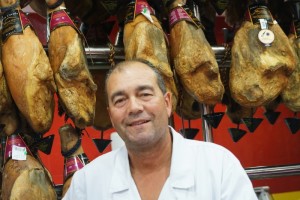 |
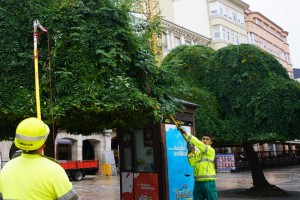 |
September 12 Tuesday: Lugo to Madrid by train
It was drizzling when I got up. I decided to take a walk before breakfast. The streets were empty and atmospheric. I stayed inside the wall and explored only a small corner. I reached the Church and Convent of San Domingos, passed the Convent of San Francisco which is now a museum before returning to the Cathedral. A mass was taken place in the Chapel of the Virgin of Big Eyes. With the lights on this time, I was able to see and fully appreciate the beautiful baroque choir and the high altar. A volunteer asked me whether I would like to have my passport stamped. I told her I had just been on the Portuguese Way. She told me that the most important features of the cathedral are the Virgen with Big Eyes, the high altar and the choir. I was pleased to learn more on my second visit to the cathedral and saw the choir and altar with lights on.
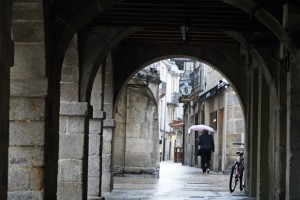 |
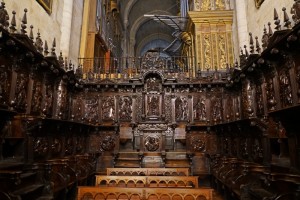 |
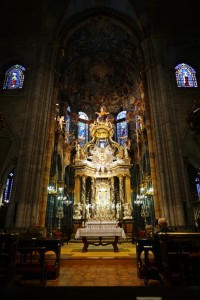 |
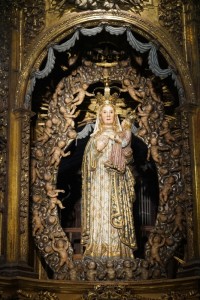 |
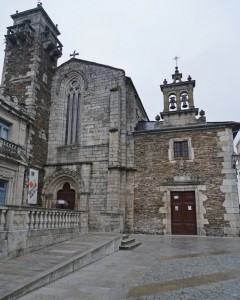 |
We took a taxi to the train station after breakfast. The train departed Lugo at 11:10am and we arrived in Madrid just before 6pm. We travelled First Class and paid €76. Good value! I had a pleasant ride and my time was well spent on reading an old issue of The Economist and watching the amazing landscape with expansive brown fields after harvest, rolling hills, valleys and villages.
We got off at the Chamartin Station and took at a taxi to Vincci Centrum. I got a good deal on booking.com and had a nice twin room for less than €550 for four nights. The location is great i.e. close to Sevilla metro station and five minutes on foot from Puerta del Sol. The staff are very efficient and helpful
Igraine came over to our hotel and we went to El Barril de las Cortes near the hotel. We had salad, turbot, seafood noodles in a wok and cava (Spanish wine) for less than €110 for three. Not cheap but good value for its high quality!
September 13 Wednesday: Madrid
We got up after 10am and did not go out for a cup of coffee till almost 11am. We paid less than €6 for our breakfast. Fantastic value!
As the keyboard of my computer did not function, I took it to two big stores to check. A helpful staff at FNAC, a large book store, advised me to take it to Samsung’s local office to repair. He tried to call without success and suggested me call in the afternoon.
We had lunch with Isabel, our new friend from Pontevedra. She had to come to Madrid for an interview at the American Embassy in connection with her application to migrate to Texas to join her partner. Her case has been processed for a year. After the interview in the morning, she got approval on the spot. She was thrilled and we celebrated with a bottle of cava and tasted several tapas. We paid less less than €65 for drink and food. Excellent!
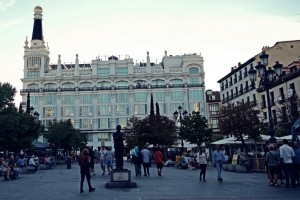 |
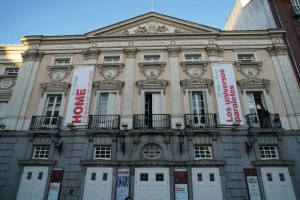 |
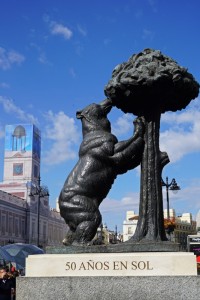 After lunch, Aliana decided to take the ‘hop-on, hop-off’ bus. It was her first visit to Madrid and a city tour on bus would be ideal as she was tired after the camino. As Isabel’s train would be leaving in the evening, she offered to help me call Samsung. She was told that it would take a day or two to check the problem and a separate section would fix it thereafter. As I would be leaving on September 16 for Iceland, I saw no possibility to fix the computer. After looking at the computer, Isabel believed that the keyboard and not computer the problem and I could use it by using an external keyboard. As my computer was out of service, I had not been able to work on my travel notes and photos. Too bad!
After lunch, Aliana decided to take the ‘hop-on, hop-off’ bus. It was her first visit to Madrid and a city tour on bus would be ideal as she was tired after the camino. As Isabel’s train would be leaving in the evening, she offered to help me call Samsung. She was told that it would take a day or two to check the problem and a separate section would fix it thereafter. As I would be leaving on September 16 for Iceland, I saw no possibility to fix the computer. After looking at the computer, Isabel believed that the keyboard and not computer the problem and I could use it by using an external keyboard. As my computer was out of service, I had not been able to work on my travel notes and photos. Too bad!
After Isabel left after 5pm, I took a walk in the Chueca district where I stayed with Lawrence and Sally on my last visit. More shops and trendy eateries have opened in the last two years.
When I met up with Aliana around 8pm, she was exhausted. She was full of praises for the hop-on hop-off bus especially she enjoyed a concessionary price for people over 65 and paid only €10 for a day pass. Both of us were too full to eat. We walked to Puerta del Sol to get tickets to Toledo (€25 for a bus ticket with 90 minutes guided tour). At her suggestion, I took her ticket for a free ride for two hours. I thoroughly enjoy Madrid by night: the city looks inviting and grand with lights on!
September 14 Thursday: Day Trip to Toledo
Toledo, located on a mountain top and surrounded on three sides by a bend in the Tagus River, was once the capital of Spain. It is also known as the “Imperial City” and as the “City of the Three Cultures” for the cultural influences of Christians, Muslims and Jews. It has been declared a World Heritage Site for its extensive monumental and cultural heritage. It is famous for its cathedral, the production of bladed weapons and paintings by El Greco (1541-1614), a painter, sculptor and architect of the Spanish Renaissance.
We boarded the double-decker bus near Puerta del Sol. It made a few stops to pick up passengers. The bus was full and we arrived at Toledo around 10:30am. My first visit to Toledo was in 1980s. The place has changed a lot and I find it too busy and touristy. I miss its old charm and tranquility.
The most visible and impressive change is the construction of a series of escalators and covered walkways from an underground garage into and through the ancient walls. As a result, the small old town can cope with ever increasing number of tourist arrivals. It is said that at peak usage, some 40,000 people a day ride these escalators. Owing to its success, a new escalator route is under construction on the other side of the city.
We followed an English speaking guide on a short walking tour through the old town. Our first stop was at the Primate Cathedral of Saint-Mary of Toledo which is the seat of the Metropolitan Archdioese of Toledo. It is one of the three 13th-century High Gothic cathedrals in Spain and is considered to be the magum opus of the Gothic style in Spain. Construction began in 1226 under Ferdinand III and the last Gothic contribution were made in the 15th century. We took photos of the main facade and tower.
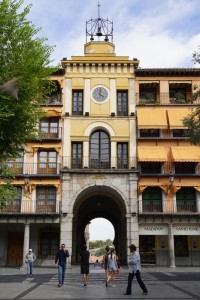 |
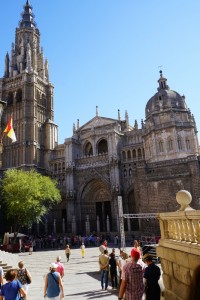 |
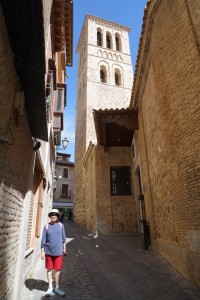 |
Then we walked on and arrived at Iglesia Del Salvador, next to the Jewish quarter which had been destroyed when Jews were expelled in the 15th century. The third stop was the Church of Santo Tomé which houses one of the most famous paintings by El Greco. Nearby is a lookout point for views of the countryside on the other side of the river. The guided tour ended here and we were reminded to be back to the carpark by 4:30pm.
Aliana was tired and we decided to stop for lunch. But the restaurant would not serve food till 1pm. So we took a long drink before our sumptous 2-course lunch (€17). The food was excellent with beautiful presentation. I like the black, grey and white colour scheme and the cool modern design. It must be a popular night spot for young and trendy customers.
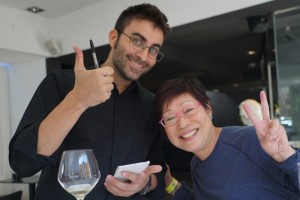 |
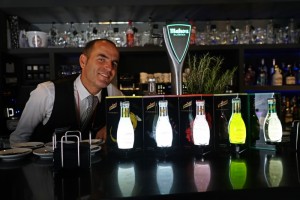 |
After lunch, we paid a fee to enter the 12th-century Church of Santo Tomé which was originally a mosque. Visitor come here mainly to see one of the most famous paintings of El Greco, the ‘Burial of the Count Orgaz” who renovated the church in the 14th century.
We followed the same route as we came. Next we visited the Iglesia Del Salvador, which reflects the city’s multicultural heritage. This small chapel was built as an Arab mosque in 999 on the site of an earlier Visigothic church. Aliana and I climbed the stairs to the top of the tower. The original Moorish building has remained intact with its arcaded facade and a series of vaulted horseshoe arches in the sanctuary. Several columns came from the Visigothic era while the transept adn the Romanesque wall paintings date around 12th century. What a wonderful mix that tells the history of over 1,000 years.
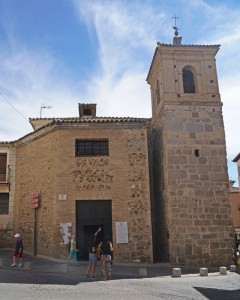 |
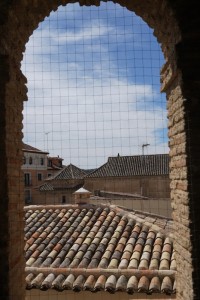 |
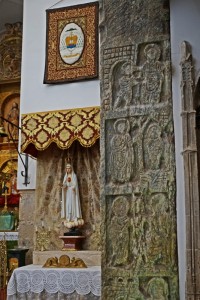 |
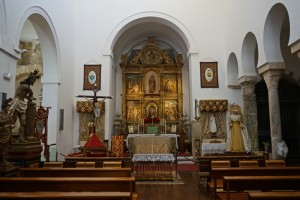 |
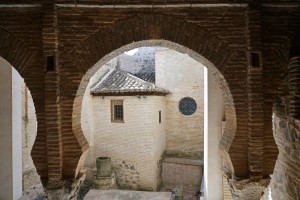 |
Finally we spent over an hour in the Cathedral which we paid an entrance fee of €14. Its interior of this massive cathedral stretches 120m in length with five naves and 88 richly decorated columns. The choir is considered one of the grandest works in art in Christendom. When I reached the sacristy, I was delighted to see El Greco’s paintings for the second time.The stained-glass windows from 14th to 16th centuries are impressive and beautiful.
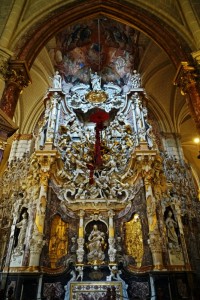 |
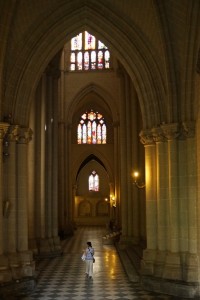 |
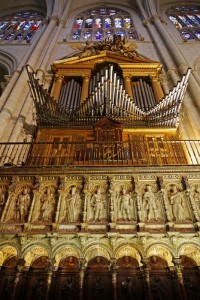 |
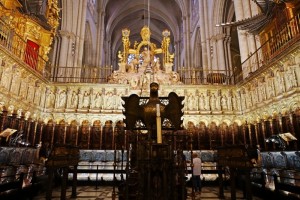 |
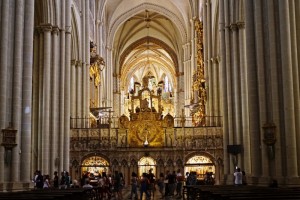 |
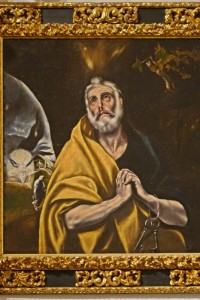 |
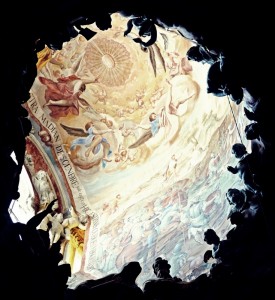 |
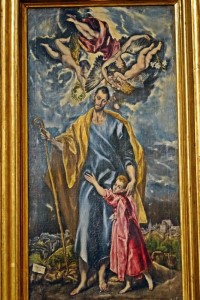 |
I marched through the cathedral without an audio-guide. As a result, I did not make the most out of my second visit. I would probably take three hours to better appreciate this monument.
There are too many things to do and see in Toledo. I would return for at least two days next time so that I can stroll around leisurely. I can also take time to visit the Alcazar, the Jewish quarter, museums, synagogues and monasteries, to walk across the Moorish bridge and along the Tagus River. I also love to experience Toledo by night.
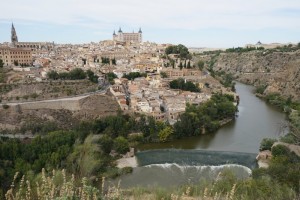 |
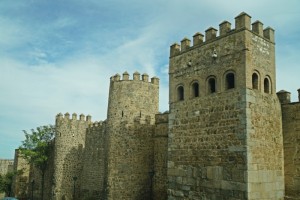 |
We were back in the hotel after 7pm. Though we were not too hungry, we returned to El Barril de las Cortes for dinner. We ordered turbot and a chicken to share and had cava. An excellent dinner cost us less than €70!
September 15 Friday: Day Trip to Alacá de Henares by train
Alacá de Henares meaning “Citadel on the river Henares” and located 35km from Madrid, stands for its rich archaeology. Romans conquered the area in the 1st century and built the town of “Complutum” which became the only Roman town in the Madrid region. It has also become a pilgrimage destination in remembrance of Saints Justo and Pastor. The city came under Moorish rule in 711 and was reconquered in 1118 by the Archbishop of Toledo Bernard de Sedirac. The city was ceded to the Bishopric of Toledo and became one of the first bishoprics founded in Spain.The major landmark and one of the greatest prides of the city is its university founded by King Sancho IV of Castile in 1293.Under the patronage of Cardinal Cisneros, it was recognised in a 1499 papal bull and quickly gained international fame as a main centre of learning of the Renaissance . The greatest writer in Spanish language and author of Don Quixote, Miquel de Cervantes (1547-1616) was born in the city. The historical centre of the city is now a World Heritage Site.
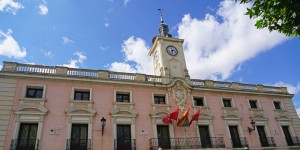 |
On Isabel’s suggestion, I took the train and arrived in Alacá de Henares after 12 noon. I founded my way to the University of Alacá, one of the oldest universities in the world and one of the best conserved Renaissance University complexes in Europe. I joined a guided tour in Spanish at 1pm: this is the only way to visit the Chapel of San Ildefonso and the Paraninfo (auditorium) where the Cervantes Literary Award is presented every year. (There are tours in English on the weekends). The architectures of the complex including the main buildings and courtyards are beautiful. The Chapel which conserves the marble sepulchre of Cisneros and the auditorium with its plasterwork and its Mudejar caissoned ceiling are impressive and worth visiting.
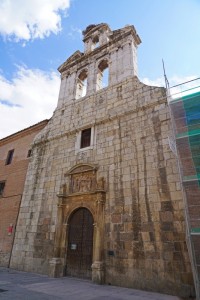 |
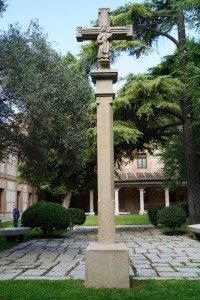 |
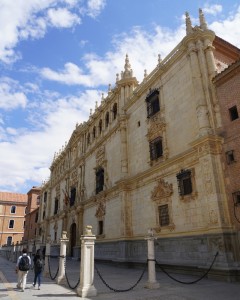 |
The town is small with many of the old historic buildings, palaces, churches, monasteries and convents. Now most of these belong to the university. I walked along the main street Calle Mayor the longest porticoed street in Spain which is well preserved with historic buildings including Casa Natal (birthplace) of Cervantes and Hospital de Antezana, the oldest hospital in Europe founded by Luis de Antezana in 1483. I had lunch in a local bar on this street.
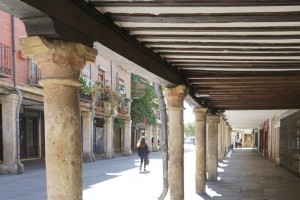 |
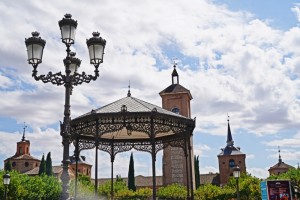 |
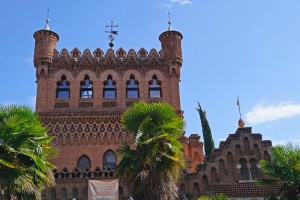 |
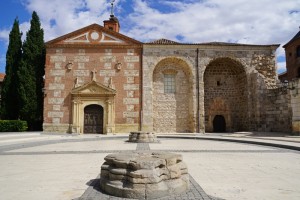 |
After .lunch, I visited the Magistrial – Cathedral of Saints Justo and Pasto which is one of the two churches in the world holding the title of Magisterial, a category that required all its canons to be, from Cisneros days, masters of the University of Alacá. The cathedral was built over the tomb of the two saints, martyred in the same place in 305. I had an audio-guide which provides useful information and interesting details.
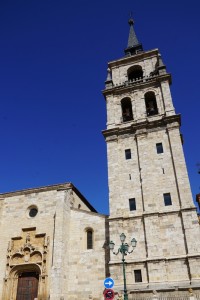 |
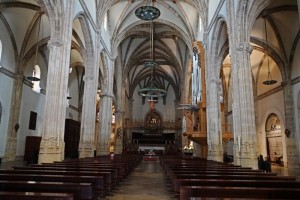 |
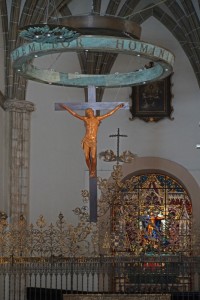 |
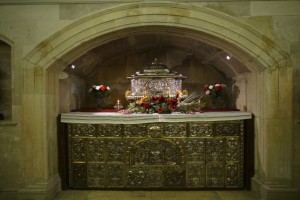 |
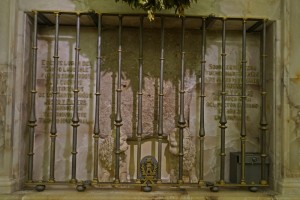 |
I also walked to the Archibishop’s Palace and had a quick tour of the Regional Archaeology Museum. As I had to return to the hotel around 7pm, I could only tour around the ground floor which display many beautiful mosaics from the Roman period. On the way to the train station, I was able to go into Casa Natal of Cervantes (house museum) where the famous writer was born. The staff were closing the door when I arrived. They kindly let me in knowing I came from afar. I appreciate their understanding and kindness.
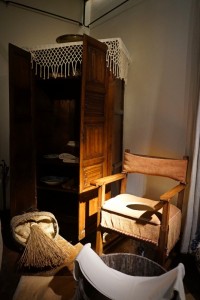 |
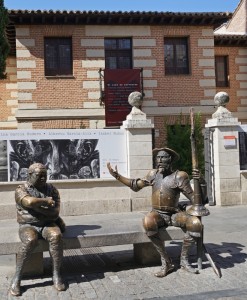 |
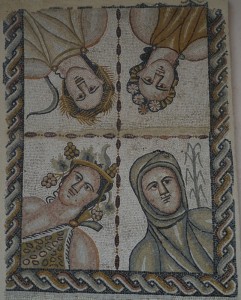 |
Aliana and I decided to have Chinese food. We found a Sichuan restaurant that served authentic Chinese food and paid €45 for a decent dinner with fresh vegetable and fish. Aliana would be leaving for the airport before 7am the following day while my flight for Iceland would depart after 10pm. She was busy packing while I lay in bed. We chatted till midnight. Both of us were ready to move on.


